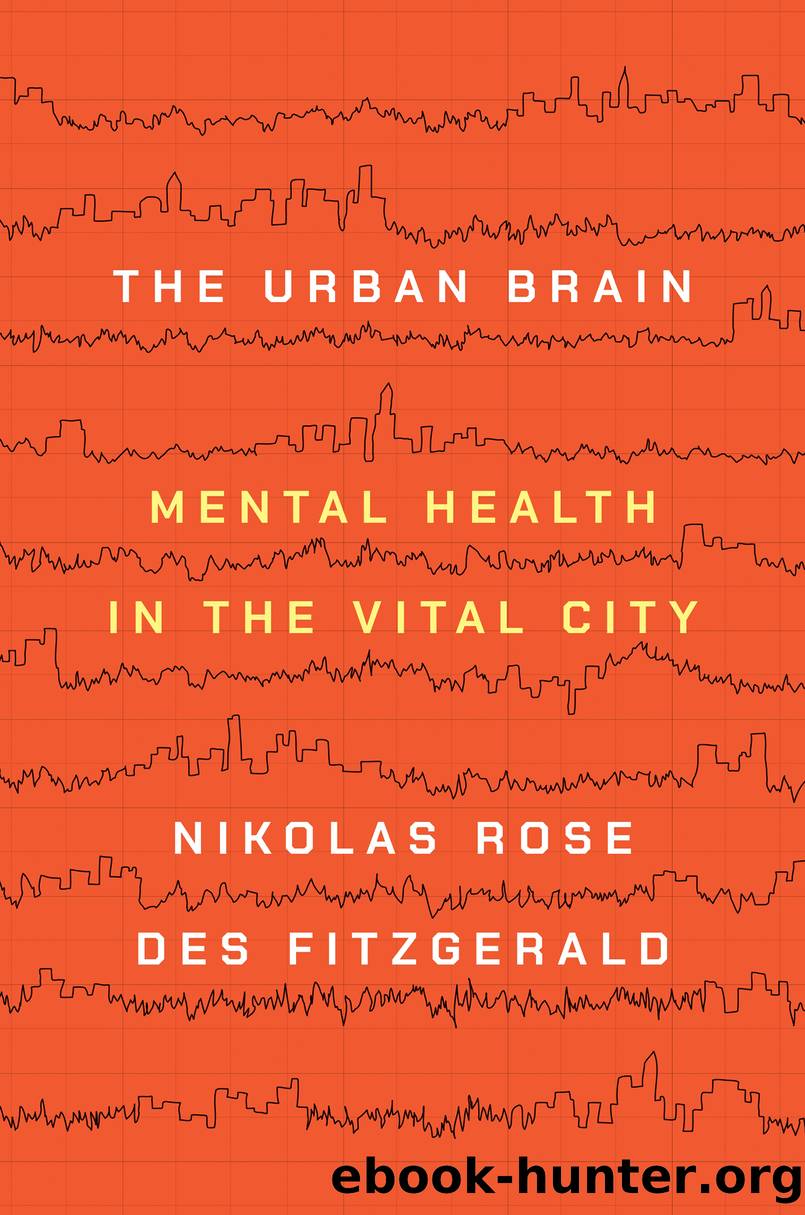The Urban Brain by Nikolas Rose

Author:Nikolas Rose
Language: eng
Format: epub
Publisher: Princeton University Press
Published: 2022-01-21T00:00:00+00:00
Understanding UrbanicityâTo a New Style of Thought?
In the three decades since the publication of the The Lancet paper on âSchizophrenia and Urban Lifeâ that we cited earlier (Lewis, David et al., 1962), thousands of articles have been published on the relationship between urbanicity and mental health or mental disorders. Almost all of the studies are epidemiological in character, using statistical correlations to evaluate associations between urban living, or one or another aspect of urban living, and particular psychiatric diagnoses. Almost all start by repeating the familiar theme that this issue is important because global urbanization trends mean that increasing proportions of the population live in cities. And almost all reviews of this body of research agree that it is difficult to draw firm conclusions because of the dearth of good evidence, the variations in measures and definitions between different studies, and the complexity of the associations that seem to be involved.
Let us take a few examples. In a recent special section of Current Opinion in Psychiatry on the theme of Urbanization and Mental Health (Szabo, 2019), a series of scholars reviewed the evidence on the relationships between urban living and psychotic disorders, mood disorders, substance misuse, eating disorders, and anxiety and stress-related disorders. Most of the studies reviewed point to the need for better data and the difficulties of undertaking comparisons between different pieces of research; thus, in the case of dementiaâwhere rates seem lower in urban settings than in rural settingsâthere are pervasive problems of definitions of urban and rural, and definitions of the disorders in question vary greatly between studies (Robbins, Scott, et al., 2019). There are repeated references to the supposed benefits of âgreen spaceââin reviewing neighborhood-focused research on the consequences of urbanicity for anxiety and stress-related disorders, authors conclude that âphysical (e.g. green space), social (e.g. social cohesion) and biological (e.g. stress response) factorsâare directly linked to the presence and severity of anxiety disorders ⦠architectural and space design elements ⦠can either increase anxiety and lead to trauma triggers or relieve symptoms and reinforce safetyâ (Ventimiglia and Seedat, 2019: 248). The allure of the microbiome is powerful with âemerging evidence that being raised in urban environments with a wide range of microbial exposure dampens the immune response to psychosocial stressorsâ (ibid.).
As for mood disorders, it seems that only depression has been seriously explored; the reviewers find that âindividuals residing in urban areas experience increased risk of depression. Mechanistic pathways include increased exposure to noise, light and air pollution, poor quality housing, reduced diet quality, physical inactivity, economic strain and diminished social networksâ (Hoare, Jacka, et al., 2019: 198). In a later review of the global literature on depression: Laura Sampson and her colleagues find âhigher adjusted odds and/or severity of depression in urban areas compared with rural areas in the Netherlands, the United States, India, and Vietnamâ; in China, depression was less common in urban than in rural areas, while studies in Ghana, South Africa, and the Netherlands showed no clear relationship (Sampson, Ettman, et al.
Download
This site does not store any files on its server. We only index and link to content provided by other sites. Please contact the content providers to delete copyright contents if any and email us, we'll remove relevant links or contents immediately.
Good by S. Walden(3489)
The Social Psychology of Inequality by Unknown(2941)
0041152001443424520 .pdf by Unknown(2785)
The Checklist Manifesto by Atul Gawande(2781)
The Meaning of the Library by unknow(2508)
Guns, Germs and Steel by Diamond Jared(2304)
Borders by unknow(2232)
23:27 by H. L. Roberts(2198)
And the Band Played On by Randy Shilts(2131)
Get What's Yours for Medicare: Maximize Your Coverage, Minimize Your Costs by Philip Moeller(2115)
Being Mortal: Medicine and What Matters in the End by Atul Gawande(2086)
A Leg to Stand On by Oliver Sacks(2006)
The Hot Zone by Richard Preston(1983)
The Valachi Papers by Peter Maas(1816)
The Laws of Medicine by Siddhartha Mukherjee(1758)
The Andromeda Strain by Michael Crichton(1701)
The Obesity Epidemic by Robyn Toomath(1648)
Pharmacy Practice and The Law by Richard Abood(1544)
Autism's False Prophets by Paul A. Offit(1496)
